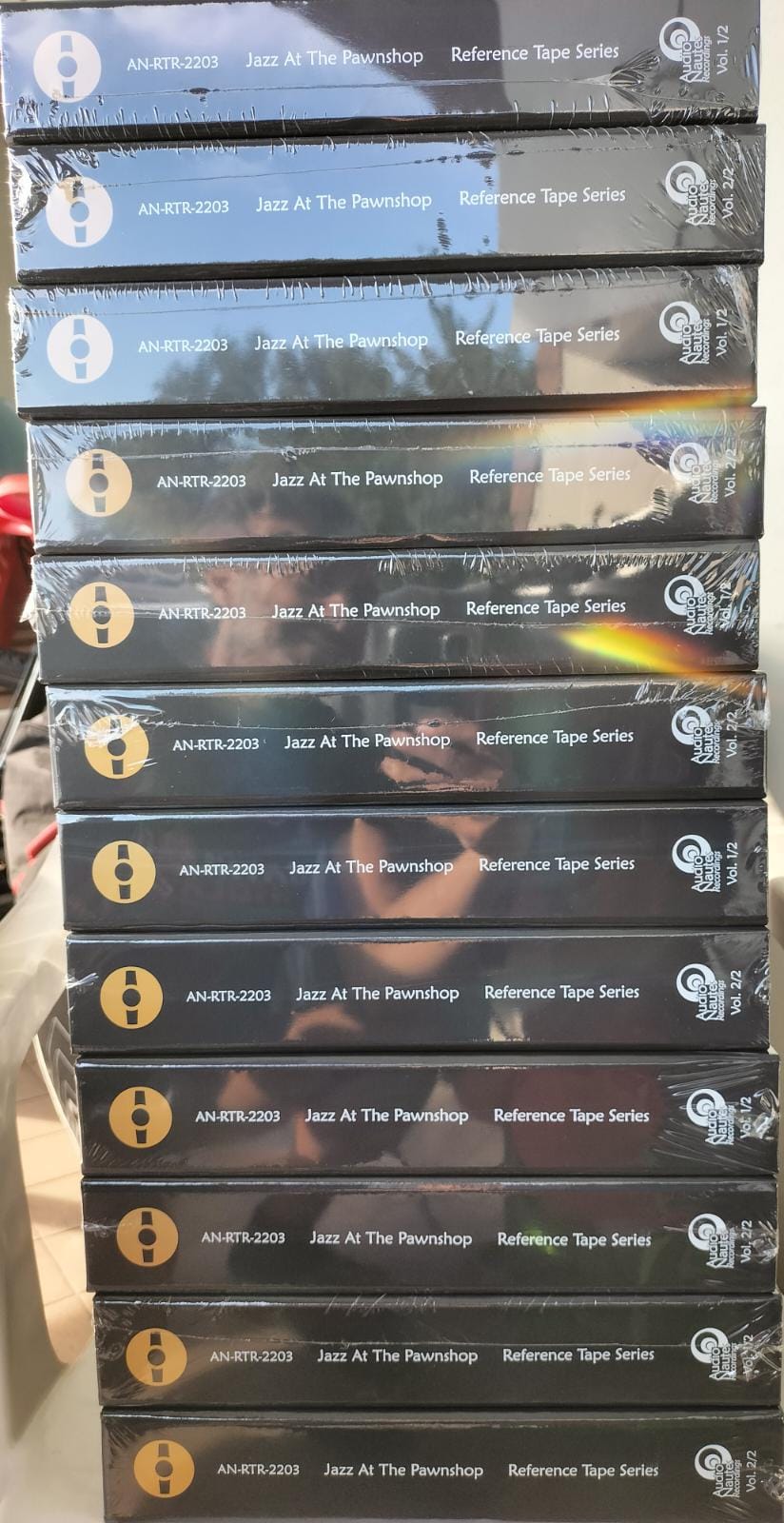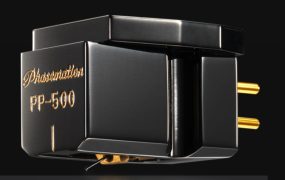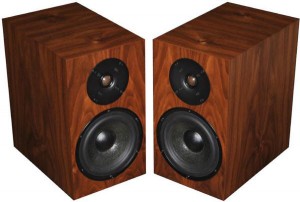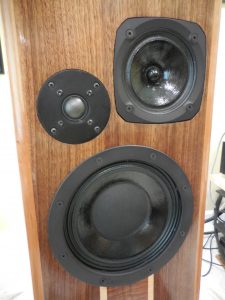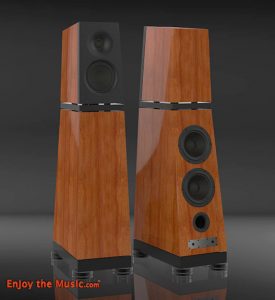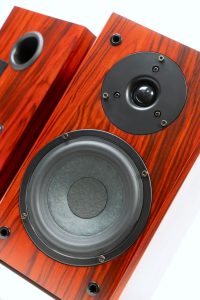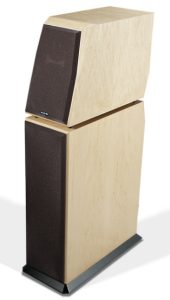This is a ground breaking review in more ways than one. To start with, this is the first Magico S5 speaker review using only analog recorded material. More to the point, it's my first review using the extraordinary VPI Classic Direct turntable and 12-inch 3D printed arm (geez reviewing might have been so much easier had this table been around two decades or so earlier) along with either the Lyra Atlas or Transfiguration Proteus cartridges. And if that wasn't special enough, the remainder of the analog source material was 15-ips, 2-track, reel-to-reel tape, arguably still the finest and highest resolution source available. (OK, there's 30-ips and ½-inch tapes but those sources are rarer than a $100,000 bill). Second, and perhaps most importantly, this is the first review of the Magico S5 speakers driven by tube amplification.
For whatever the reason, many audiophiles—perhaps in large part because Magico almost exclusively uses solid-state amplification at high-end audio shows—wrongly assume that Magico speakers and tube amplifiers are mutually exclusive. But nothing could be further from the truth. (In fact Alon Wolf, designer of Magico speakers, made it abundantly clear in our conversations that he appreciates the qualities of both technologies to drive his speakers.) And the cj ART amplifiers didn't disappoint. Not only did these 275 wpc tube behemoths easily drive the S5s with none of the sloppiness in the lowest octave that Alon feared might happen, but the ART monoblocks and Magico speakers were a match made in heaven! The ART amplifier's liveliness, huge soundstage and unique ability to unravel the complex overtones of instruments and singers especially on reel-to-reel tape never came across better. In fact, there's a very special synergy going on between the ART monoblocks and the S5 speakers in the mid- to upper bass region. Take the renowned Badal Roy's tabla solo on "Calcutta Sunrise" from the simply mindboggling Yarlung Records tape release Suryodaya. (Also available on CD and 88/24 download from HDtracks.) Roy literally with his use of beats makes the tabla resonate, ring and literally sing in his hands and the cj/Magico combination brings the recording to life. Would a solid state amplifier been slightly more extended and tighter in the lowest octave? Would the right solid-state amplifier contributed to an even lower overall noise floor? Possibly. But the cj ART tube amplifiers and Magico S5 speaker combination was truly something to behold.
The Beginning of the End
Perhaps the real take home message from the time spent with the Magico S5s is that we [audiophiles] often are far too hasty to judge the sound of a component based upon one quick listen at a high-end audio show or dealer's showroom. That old adage about hearing a component in your own system before making any legitimate judgment (s) often takes a backseat in the rush to compare listening notes with your audiobuddies or online friend. Let's be honest. Audio shows (and/or dealer showrooms) are more often than not simply a poor substitute for a home audition. Case in point: Magico speakers. Despite hearing Magico's Q-series speaker at several shows—not to mention two local Magico dealers—I was baffled by the praise heaped upon the speakers.
Now was it the rooms (or showroom), primarily SS amplification, digital sources, etc. that colored and clouded my judgement? For that matter, the Magico magic didn't begin to reveal itself until Bob Visintainer, owner of Rhapsody Music and Cinema in New York City, kindly invited me to drop by and listen to the 50 watt Absolare SE tube amplifiers driving the new Magico S5 speakers. Then the S5s once again captured my imagination and curiosity at the 2014 CES and made my list of standout show rooms. In fact, I even commented to Peter Breuninger in our "Reviewers View" CES show wrap for AVShowrooms.com that the "S" in S5 stood for soul. Then due to fortuitous circumstances, Magico was able to shake loose a pair of S5s for review in PFO. And they're leaving my room over my dead body!

Love at First Listen?
Looking back now, there were many reasons for my nearly two decade long love affair with electrostatic speakers. Foremost among those reasons is the electrostatic speaker's ability to capture microdynamics and bring music to life. That spellbinding and simply captivating sense of musical nimbleness and sense of ease. Then there's the panel's low level resolution, lack of boxiness and completeness of harmonic overtones that reveals the smallest nuances of instruments. While dynamic speakers are unquestionably better at reproducing macrodynamics—and the Summit-Xs were a bit ahead of most panel speakers in this regard—box speakers never said buy me. It was painfully obvious what was missing every time the electrostatics supplanted the dynamic speakers in my system. Well not this time.
The Magico S5s–unlike the majority of speakers out there—possess a rare and remarkable ability to capture and reproduce both macro- and micro-dynamics. That elusive ability to slam you over the head with The Tape Project's 15-ips release of Arnold Overtures while at the same time finesse you to death on the tape release of Bill Evans Waltz for Debby. A unique ability to accelerate from 0 to 60 in 3 seconds that is coupled with a dynamic coherency from the top to the bottom of the frequency spectrum as well as a function of loudness levels. Even more impressive is the S5s ability to render low frequency microdynamics, microdetails and subtleties associated with cellos, double basses and drums. Sadly, the S5s really illustrate that the Martin-Logan's have a very difficult time showing just how compressed some rock LPs from 60, 70s and especially later on are relative to their tape counterparts.
While the S5's dynamics can be positively breathtaking, it's in the areas of quietness and settling time (two terms more commonly associated with electronics than speakers) where the Magicos really break new ground. In fact, the lowering of audio system's noise floor through judicious attention to equipment, cables and especially AC supply is one of the biggest breakthroughs in high-end audio in recent years. Now add speakers to the list. The S5s are simply the quietest sounding speaker by leaps and bounds that's been in my reference system to date and retrieves more information off the software without having to resort to that fake, jacked-up, hyper-detailed upper midrange of but a decade or so ago.
Fully appreciating the speaker's quietness and everything that Alon and company have truly accomplished in the design of the S5 speakers—namely the rigid enclosure, specially designed drivers and matching crossover—demands both the finest in upstream components and software. Not to mention it's a two-way street since the speakers reveal more information about these records and tapes than ever imagined. (Of course you can listen to any type of music on the S5 but to really test the speaker's performance ceiling requires the best in software.)
And there are arguably few better recordings and sonic blockbusters than The Tape Project's release of the 1991 Reference Recording Arnold Overtures (TP-003). Here the tape delivers what the LP only hints at. There's simply zip, zero, nada, read no comparison between the two medium. The Tape Project release exhibits less brightness, a far better sense of individual instruments and unparalled dynamics, harmonics, transparency and sense of space compared to the LP. Through the S5s, Keith Johnson's ability to capture the unrestrained dynamics and sense of ambient space of renowned Watford Town Hall in London on "Commonwealth Christmas Overture," comes through loud and clear. Brass sounds brassy without going anywhere near that shrill territory. The whole atmosphere of the recording shifts on a dime when Arnold shifts into his Caribbean calypso theme. While the Magico S5s are far from a small speaker, they still play bigger than you would expect on this and other recordings.
Another simply spectacular recording—and one of my all-time favorite Tape Project releases—is Bill Evans live '61 recording Waltz for Debby (TP-008). (When will the TTP release the companion release Sunday at the Village Vanguard—or is the master tape in really bad shape?)! Hit the tape machine's play button and exit room and walls and enter Evans' trio. Not only can you see to the very back of the Village Vanguard but there's an amazing ability to hear and clearly understand what the audience is saying. And when the audience applauds, the reverberation of their handclaps fills the club. (Oh yes, the silence is deafening on those pieces recorded that Sunday before the audience arrived.) But the beauty of the S5s is more than skin deep. There's just something really special about how the S5s communicate the emotion, harmonic shadings and romanticism of Evans's playing. Evans' absolute precision and mastery of the piano with never a note out of place. A simply amazing sense of articulation and lack of smearing of notes without that somewhat mechanical quality often associated with the LP issues. The piano's overtones simply envelop the instrument. That remarkable interplay between Evans and LoFaro! That's why he was the master!
Just as, if not more impressive sounding than the aforementioned pair of recordings, is my 2013 PFO Product of the Year Smoke and Mirrors tape (Yarlung Records). While anyone with one ear could hear through the Martin-Logan Summit-Xs that this Bob Attiyeh produced and recorded album was a sonic spectacular, there was simply no inkling what was to come when listening to this amazing performance and recording through the Magico S5s. To begin with, the ML Summit-Xs don't come close to the S5s in reproducing the prodigious and extended low end of Harrison's Canticle No. 3 on this recording. Two, the speaker's (and system's) low noise floor produces an unbelievable sense of transparency, resolution and spaciousness. Finally, there's the S5's ability to articulate and communicate without adding or subtracting from the repeating patterns of, for example, the marimbas on Reich's Nagoya Marimbas.
Before proceeding any further, however, it's important to mention that current (or prospective) S5 owners should when listening ensure that their ears are positioned roughly midway between the tweeter and midrange driver. While this tweak probably proves more beneficial for height challenged listeners like myself, those with listening chairs with low seat will also benefit from this free tweak. Accounting for seat height significantly impacts and improves the system's already amazing transparency, resolution, harmonic structure and bass integration.
Love is A Many Splendored Thing
Electrostatic speakers have, despite all of the improvements in dynamic speaker design, technology, parts, etc, continued to reign supreme for decades because of their midrange purity, coherency and resolution. Interestingly, in the case of hybrid electrostatics like the ML Summit-Xs, their midrange quality is directly traceable to the panel's lightness and responsiveness to the electrical signal. The midrange purity and resolution of the S5 on the other hand, appears to derive in part from the speed and control of the specially designed Magico midrange drivers, in part from the lack of colorations emanating from the speaker cabinet and in part to the bass being better integrated and not mucking up the midrange. Nor is there any better example of the S5's midrange resolution and neutrality than Essential Elvis, Vol. 2 (Analogue Productions APP 057-45). This album has converted more than one digital lover into an analog enthusiast and receives my vote for the best LP reissue of all time. The Magicos on either "There'll Be Peace in the Valley" or "Have I Told You Lately That I Love You," reveal the smallest nuances of Elvis' voice as well as the vocal range of each and every Jordanaire. The conversations between Elvis and the engineers in the control room (perhaps a more appropriate title for the album is "Elvis Raw") are rendered with uncanny resolution. Not to mention, the Magicos give a new meaning to Elvis (as well as the Jordanaires) is in the room. One thing is for sure though. Don't blame the Magicos if this recording doesn't come to life.
When all is said and done, however, the S5's best quality might well be (when the speakers are optimally positioned and toed-in) its upper octave performance. If I've heard "The Worried Drummer" cut from Mallets, Mayhem and Melody (Columbia CS8333) once, I've heard it a thousand times. Yet with the Magicos, it was a totally difference track. Take for instance part way into the piece where the triangle is struck and the instrument resonates and decays for a period of time. While the Summit-Xs captured the triangle's decay, the Magicos take it to the next level. All of a sudden, missing textures and shimmering appear out of nowhere. But there's no better example of the S5s tweeter's freedom from compression and breakup than on the wonderful Erato recording of Marius Constant's ensemble piece for unusual instrumentation 14 stations pour percussion et six instruments (Erato STU 70603). The gongs and cymbals release a tremendous amount of energy and there's no evidence of hardening until the cartridge, in this case the soon to be reviewed Transfiguration Proteus, shows some strain.
Lastly, the low end performance of the Magico speakers has been the subject of some discussion and even some disagreement among reviewers. Make no mistake. Play great recordings through the S5s and the bass is extraordinarily clean, uncolored, defined, dynamic and tight. Play less than reference albums and all bets are off. On the best recordings, there's none of that low frequency overhang that we've become so accustomed to that we accept it as real (not any different than doing the same thing over and over again and expecting a different result). Except these colorations don't exist in real music. There is on the wonderful Kip Dobler direct-to-disc recording Reaching Out from the Inside (Cardas CR5813) or Arnold Overtures with its big bass drum a slight loss of the slam in the lowest octave. But that loss of slam is more likely attributable to the tube amplifiers than the speakers; clearly a solid-state amplifier might be the answer here if you're a bass freak.
But there's real magic happening just a hop, skip and jump further up in the frequency spectrum. Take Elinor Frey playing Bach's Suite No. 1 for solo cello in G major from the Yarlung Records reel-to-reel release Diagloghi. Through the Martin-Logan Summit-Xs Dialoghi is a very good recording; through the Magico S5s, I challenge anyone to find a better, more realistic sounding cello recording. The instrument's textures and marvellous tone. The sound and feeling of Frey's specially made baroque bow moving across the strings. The precision and the timing of the music. The vibrant richness of the cello without crossing over into the area of romanticism or bloating. It's all there in spades. Not to mention this is the first speaker that has successfully captures a real sense of space between the cello/piano. So much you feel you could drive a truck through it. Well at least a small SUV.
A Match Made in Heaven
Magico's stated goal for the S series line, "was to utilize the technology developed for their Q-series of speaker and make it available to wider audience." And the S5 is a tribute to the success of this approach. The S5s are extremely well balanced and no one quality stands out in contrast to another. On one hand, the speakers resolve all of a recording's nuances and at the same time pay homage to the music. Every record and tape played through the Magicos was a new experience. No, the Magicos won't add pleasing colorations to your less than ideally recorded recording. What the S5s will do—if neutrality and bringing the sound of the original recording into your listening room is your goal—is bring the listener several steps closer to real music.
Are the S5s perfect? Is any speaker perfect? Where the S5s primarily falls slightly short of ultimate is in their scale of performance and resolution. Yes, its bigger brethren and other speakers will move a little more air in the lower octaves. But these are simply minor nitpicks and the S5s really deliver the goods.
This is hardly the final word on the S5 speakers. These Magicos are staying put and hopefully down the road, I'll have an opportunity to report on them being driven by a top and possibly even a bigger wattage solid-state amplifier. Stay tuned.
Technical Highlights
Alon Wolf and Magico have a very simple and noble design philosophy: Solve the fundamental issues without creating new ones.
It makes more sense, though, since HIFI Critic, Soundstage.com and HIFI+ (see Magico's website) have already more than adequately covered the technical details about the S5, to explore some other questions about Magico speakers.
Possibly one of the most common questions relates to the differences between Magico's no holds barred Q- and their newer "second," S-series speaker line. (Also see upcoming interview with Alon Wolf.) "Both series," Alon answered, "are really from the same family. The S-series," added Alon, "is small in stature and big in sound." (Well it is about 500 lbs less anyway.) "No, the S-series is not built to quite the same rigid tolerances as the Q-series," Alon continued, "but they are not different animals either. Basically both lines follow a common theme when it comes to the design of the speaker enclosures, crossover and drivers." Indeed, there's a common theme of transient attack, realism, dynamic range, low noise, etc. across all Magico speaker reviews.
The Q-series offers more refinement, better crossover parts for lower distortion and noise floor and a custom tweeter that handles a bit more power. "While the S-series isn't quite as robust as the Q-series, the curved enclosure allows for," Alon points out, "better standing wave control inside the speaker than its cousin Q- series." On the other hand, the Q-series is more advanced with its massive bracing (or say the 1000 parts that go into Q7) that contributes to the speaker's lower noise floor.
Alon also pointed out that, "it's important to remember that the S-series is a three-way as opposed to the Q-series that is a four-way speaker design." The dedicated mid-bass driver used the four-way design produces a more linear bass and a fuller presentation.
Perhaps the bigger story or accomplishment is, though, is how Alon Wolf balances the different speaker design parameters and produce a great sounding speaker like the S5s? For example, why and how did he trade-off some efficiency for low end frequency extension? Or as he says, "there is no free lunch."
How many hours do the S5s require to fully break-in? According to Alon, the S-series requires around 200 hours as the drivers are partially broken-in in house during the QC process. The principal parts that needs to break-in according to Alon, "are the caps and particularly the chokes that need the additional time to optimize their magnetic field saturation.
When it comes to set-up, the Magicos were certainly no more difficult and in some ways because they're sealed enclosures, even easier to set-up, than other speakers. It was easy to get 80+ percent of their performance in a couple of hours using the old Cardas rule of thirds. Since the speakers arrived from the previous stop on the review tour sans owner's manual , I fine tuned the S5's positioning eg. relative to the side-walls using (1:3, 1:4, etc.) using the Q5 instruction manual. Once the speakers are situated, then it's especially crucial to toe the speakers in to balance the tweeter (using a Bosch laser digital). After all was said and done, I ended up with the speakers toed-in about 2 inches and sitting in roughly an isosceles triangle. Then as previously mentioned, listening seat height was used to fine tune the sound of the speaker. I can't, 1) comment upon speaker break-in time since this review pair was well used; and 2) the sound with or without the grilles because the miles had taken their toll and the ability of one of the grilles to magnetically attach to the baffle.
Finally it's important to carefully consider the speaker cables used with the S5s. Given the speakers strengths, I would definitely opt for a very low noise speaker cable with extended and tight low frequencies, great resolution and excellent spatial qualities. While I would have liked a bit more time to experiment with a few other cables lying around the apartment, I did listen to the Magicos with either the Transparent Audio Reference XL MM2 or Skogrand Ignis Purist speaker cables (see upcoming review). Of the two, my favorite speaker cable to use with the S5s was the Skogrand Purist Ignis. But that wasn't the case in the beginning. The Skogrands, even after cooking with the Cable Cooker for three days, still took forever to settle-in. But in the end, my patience paid off and the ugly ducking evolved into a beautiful swan. The Purist Ignis cables were very quiet and excelled in low end extension, neutrality, resolution and dynamic ease. Transparent MM2 speaker cables were also an excellent choice with the Magicos excelling at among other things, capturing a recording's sense of space and ambience and instrumental three-dimensionality but not quite matching the Skogrand when it came to transient attack, transparency and definition and extension in the low end. The MIT Matrix and Oracle cables sent back a couple of months ago as well the Kubala-Sosna Emotion speaker cables would also be worth investigating. Myles B. Astor
S5 Loudspeakers
Retail: (depending upon finish): $32,400 (MCAST), $35,500 (MCOAT). Available in six finishes plus other upon request.
Magico
3-way speaker (1 x 1" MB30 tweeter, 1 x 6" M380 midrange, 2 x 10" hybrid nano-tech bass); Rated sensitivity: 89 dB; Impedance: 4 ohms; Recommended power: 50-1200 watts; Weight: 190 lbs.







